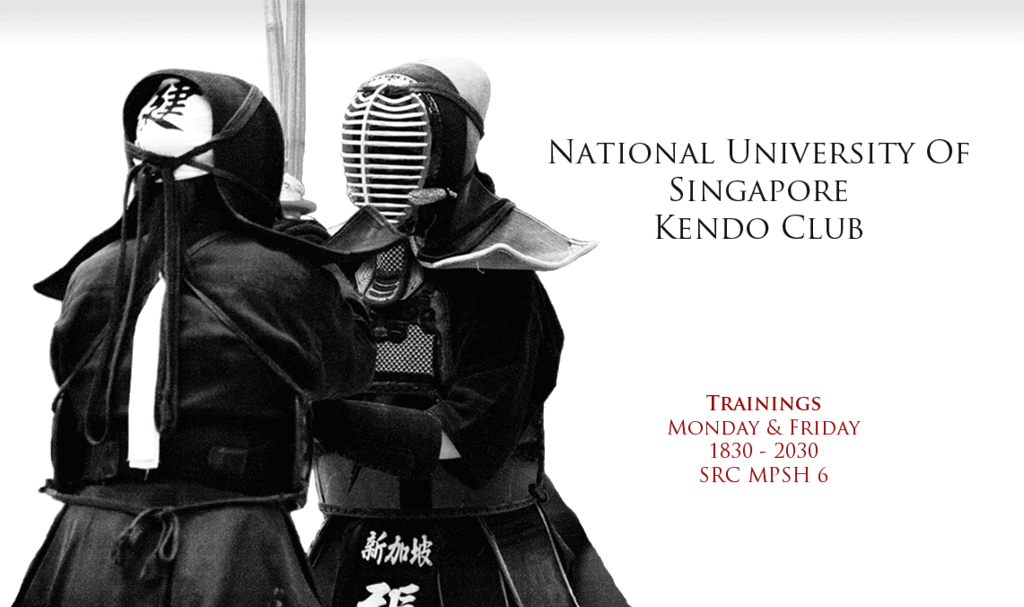This year the camp was held in late December to accommodate members that were going to travel overseas during the semester break. As a result the camp had to be slotted in right between Christmas and the new year. Not a bad thing though--it probably helped us to burn all the junk that we ate during Christmas and to prepare us for the coming New Year.
As we would expect of a training camp...there were plenty of trainings.
This year the key objective of the camp was to prepare the seniors for the Youth Kendo Tournament that would be held the following month. As for juniors, the camp for them to acclimatise to their new friend, their bogu.
Almost everything in the schedule was similar to previous camp EXCEPT that Captain Yong He introduced a morning run for the second day that I think stunned everyone. [No offence though, I liked the run :)]
Being in my 2nd year for kendo, I had only been to one camp, the one that was held the previous year. During my time as our bogu had not arrived in time for the camp, we trained pretty much only suburi (cuts) and ashi-sabaki (footwork) for the whole 3 days.
It was 'MEN' and 'MEN' and 'MEN' or 'Ahhhhhhhhhhhhhhhhh' for the whole 3 days. Urggghh, don't remind me of it!
Anyway, I shall list down what happened during the camp with the best of my memory.
Day 1
After the briefing and the opening of camp, first training was from 11am-1pm. Before this, the seniors taught the juniors how to wear the tenogui and men. Many managed to internalize the wearing of both before official training began at 11am.
For our first training as seniors, we had the usual exercises except with more focus on speed and zanshin (awareness). Probably due to a week of no kendo training, I felt like a cold engine in the morning--hard to achieve optimum functionality.
Day 2
I will skip the morning run, in case I bring up any bad memory :). Moving on we had a combined training with the juniors led by Zehao. I will leave it up to Melissa to narrate about it...
Then we had another 2 trainings.
Day 3
Too tired to think. My brain probably shut-down and survival instincts took over. We did plenty of mock keiko and we also grouped up into teams of three to get a feel of team battles.
Somehow or another, we reached the last training of the day! OMG we survived. Haha.
[To celebrate the end of killer training, we had pizza for dinner, camp debrief and a good time together in air-con (:
This was also one of the few nights we didn't all just crash in our beds for sleep after dinner. We stayed up to play Monopoly Deal and of course, our club's favourite--MURDERER.]
Day 4
We had the final kata session before break camp :)
[There were many funny moments. Some of us were so used to training kendo that when it came to kata, we started using fumi-komi (stomping footwork) and shouting out "kote" instead of "yaaaa".]
MELISSA:As juniors, this was the first training camp we attended after about 4-5 months of non-bogu training. It was also the first time putting on our
men, the first time training in full
bogu, and learning
kiri-kaeshi and to strike on the actual
men,
kote and
dou.
With 8 trainings plus a fun-run spread out over 3 days, there was limited time for our bodies to rest and recover, and that resulted in most of us lying down for barely an hour’s nap on the floor of our very dojo during our lunch breaks. And by the second day, we were already Leuko-wrapping our feet and massaging our sore limbs.
The transition from non-bogu to full bogu training was not easy. Every cut and move made seemed to require more effort, and it was no doubt a lot stuffier having the
men on.
Personally, apart from exhaustion, the intensifying pain on the sides of my head due to my unseasoned men was what ‘almost killed me’. But I became a little stronger each time I pushed myself to bear with the pain.
It was the encouragement and support among us that made trainings a little more bearable, knowing that each and every one of us is going through
[or would have gone through, in the case of the seniors] the same thing, each striving to give all that we have got.
Needless to say, this training camp was tough. But having survived all through the 8 trainings, coming out aching and blistered but otherwise very much alive, means we have gotten that much stronger!






























